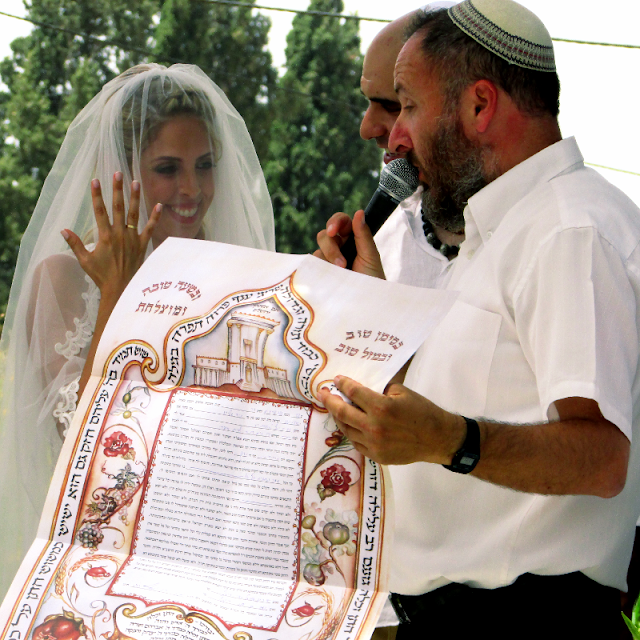Wedding in Ha'Sharon Kibbutz
 |
| Traditional secular wedding ceremony performed by a rabbi under a chuppa. Modern style ktuva displayed to the gathered family and friends. 2016 D-A Vider |
Spring is wedding season in Israel. Families gather in glitzy halls, parks or back yards, and in most typically rural settings. The most desirable rural locations are old kibbutzim (communal settlements) and moshavim (communal agricultural villages). Israelis still feel nostalgia in life cycle ceramonies. Bar mitzvahs, a man's right of passage into the community is celebrated with great difficulty by reading a Torah portion in a synagogue prayer. This in an era where up to 70% of Israelis could not find their way in a sidur (prayer book) to save their lives. Well, most Israeli brides look for a rural green and preferably agricultural setting for their weeding ceramony. Luckily many defunct agricultural settlements have gotten into the ceremonial business. Most weddings are considered small affairs. They host from 200 to 400 guests. The traditional wedding ceramony starts out the affair. This element is most representative of traditional Jewish ceremonies practiced the the last millennia in communities around the world. The modern elements are a meal and dancing to Israeli "middle eastern" style music. A fusion of Arab sounds and rhythms with Hebrew poetry. Dancing and music, always an unique part of community celebration has stayed and evolved, much like other celebrations in Israel today. In the last hundred and thirty years Jews have brought tradition and fused it with new inventions, a blend as vibrant as any from modern countries around the world.
Comments